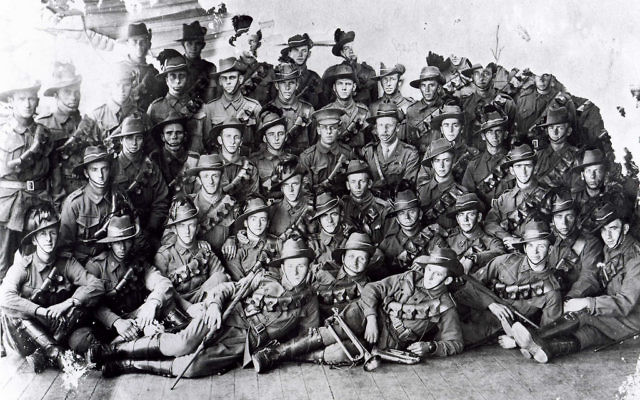Building knowledge of Beersheva
THE Australian Light Horsemen’s famous victory in the Battle of Beersheva – 100 years ago next year – is widely known as the turning point in a long campaign.
THE Australian Light Horsemen’s famous victory in the Battle of Beersheva – 100 years ago next year – is widely known as the turning point in a long campaign to defeat the Ottoman Empire from the Sinai, paving the way for the Balfour Declaration and, 30 years later, the establishment of Israel and several Arab nation-states.
Less known, but equally fascinating insights about this battle were shared by Dr John Morrison at an Australian Friends of Hebrew University of Jerusalem (NSW) luncheon in Sydney last Sunday, including how a desperate, surprise change of tactics by British General Sir Edmund Allenby, in the nick of time, ultimately proved decisive.
Morrison, whose grandfather and great uncle served as light horsemen, said these specialised “mounted infantry” were effectively used as part of the Anzac Desert Mounted Corps as “shock troops” that rode in, fought dismounted, and rode out.
“The irony is the exploits for which they are best known for, Beersheva, was a traditional cavalry-style charge.”
Morrison said things were going horribly wrong for the British-led Egyptian Expeditionary Force in early 1917 when it suffered horrific casualties in back-to-back failed assaults on Ottoman defences at Gaza in a bid to gain control of the strategic Gaza-Beersheva line.
Six months later, the newly appointed General Allenby, “who wasn’t afraid to think outside of the box, looked at the situation and said why don’t we attack the other end of the line and try to divert the Turks?” Morrison said.
“This was only partially successful, and one of the real difficulties was the particularly harsh and inhospitable terrain.
“The Australians used Waler horses, which were smaller, stockier and hardier – no great beauties but incredibly tough animals.
“Still, in order to march the troops to Beersheva and launch the attack, the town essentially had to be taken in one day due to lack of supplies.
“During the October 31, 1917 attack on the town, defended by 1000 Turkish riflemen, Allenby sent a message to Australian Lieutenant-General Sir Harry Chauvel that Beersheva must be taken by sunset.
“So, more as an act of desperation than anything else, they sent the fourth and the 12th Australian Light Horse Brigades – about 800 horsemen all up – to charge through the western side,” Morrison said.
“One of the reasons it worked was it was the last thing the Turks expected.
“The extraordinary thing was the Australians only suffered 31 killed – it really was a spectacular success – one that led to later victories in the Judean Hills, Damascus, Aleppo and finally the Ottoman Empire signing the Armistice of Mudros.”


comments